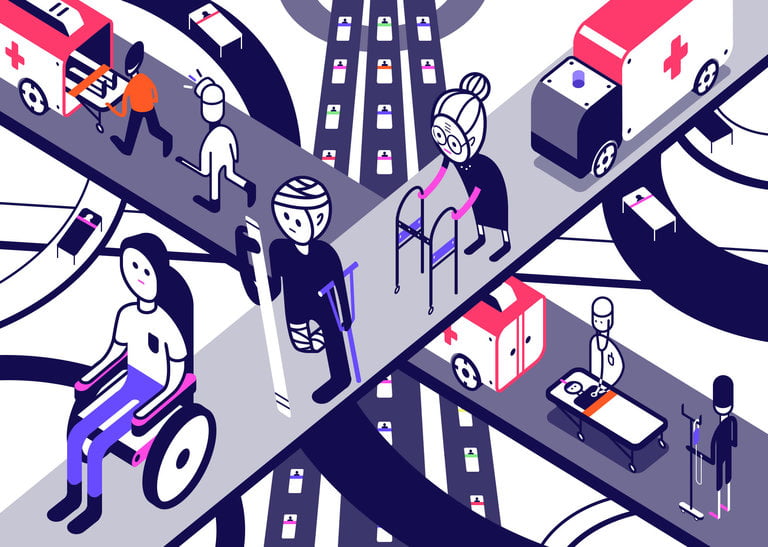

“Nobody knew that health care could be so complicated.” President Trump said that in February, yielding more than a few chuckles from pundits and late-night comedians.
In fact, anyone who has spent some time thinking about the issue sees its complexity. With the collapse of the Senate health care bills this week, the president has certainly been reminded of it.
But Mr. Trump’s epiphany raises some questions: Why is health care so complicated? How does it differ from most of the other goods and services that the economy produces? What makes health policy so vexing?
In Econ 101, students learn that market economies allocate scarce resources based on the forces of supply and demand. In most markets, producers decide how much to offer for sale as they try to maximize profit, and consumers decide how much to buy as they try to achieve the best standard of living they can. Prices adjust to bring supply and demand into balance. Things often work out well, with little role left for government. Hence, Adam Smith’s vaunted “invisible hand.”
Yet the magic of the free market sometimes fails us when it comes to health care. There are several reasons.
Continue reading the main story
Continue reading the main story
Externalities abound. In most markets, the main interested parties are the buyers and sellers. But in health care markets, decisions often affect unwitting bystanders, a phenomenon that economists call an externality.
Take vaccines, for instance. If a person vaccinates herself against a disease, she is less likely to catch it, become a carrier and infect others. Because people may ignore the positive spillovers when weighing the costs and benefits, too few people will get vaccinated, unless the government somehow promotes vaccination.
Another positive spillover concerns medical research. When a physician figures out a new treatment, that information enters society’s pool of medical knowledge. Without government intervention, such as research subsidies or an effective patent system, too few resources will be devoted to research.
Consumers often don’t know what they need. In most markets, consumers can judge whether they are happy with the products they buy. But when people get sick, they often do not know what they need and sometimes are not in a position to make good decisions. They rely on a physician’s advice, which even with hindsight is hard to evaluate.
The inability of health care consumers to monitor product quality leads to regulation, such as the licensing of physicians, dentists and nurses. For much the same reason, the Food and Drug Administration oversees the safety and effectiveness of pharmaceuticals.
Health care spending can be unexpected and expensive. Spending on most things people buy — housing, food, transportation — is easy to predict and budget for. But health care expenses can come randomly and take a big toll on a person’s finances.
Health insurance solves this problem by pooling risks among the population. But it also means that consumers no longer pay for most of their health care out of pocket. The large role of third-party payers reduces financial uncertainty but creates another problem.
Insured consumers tend to overconsume. When insurance is picking up the tab, people have less incentive to be cost-conscious. For example, if patients don’t have to pay for each doctor visit, they may go too quickly when they experience minor symptoms. Physicians may be more likely to order tests of dubious value when an insurance company is footing the bill.
To mitigate this problem, insurers have co-pays, deductibles and rules limiting access to services. But co-pays and deductibles reduce the ability of insurance to pool risk, and access rules can create conflicts between insurers and their customers.
Insurance markets suffer from adverse selection. Another problem that arises is called adverse selection: If customers differ in relevant ways (such as when they have a chronic disease) and those differences are known to them but not to insurers, the mix of people who buy insurance may be especially expensive.
Adverse selection can lead to a phenomenon called the death spiral. Suppose that insurance companies must charge everyone the same price. It might seem to make sense to base the price of insurance on the health characteristics of the average person. But if it does so, the healthiest people may decide that insurance is not worth the cost and drop out of the insured pool. With sicker customers, the company has higher costs and must raise the price of insurance. The higher price now induces the next healthiest group of people to drop insurance, driving up the cost and price again. As this process continues, more people drop their coverage, the insured pool is less healthy and the price keeps rising. In the end, the insurance market may disappear.
The Affordable Care Act (a.k.a. Obamacare) tried to reduce adverse selection by requiring all Americans to buy health insurance or pay a penalty. This policy is controversial and has been a mixed success. More people now have health insurance, but about 12 percent of adults aged 18 to 64 remain uninsured. One thing, however, is certain: The existence of a federal law mandating that people buy something shows how unusual the market for health care is.
The best way to navigate the problems of the health care marketplace is hotly debated. The political left wants a stronger government role, and the political right wants regulation to be less heavy-handed. But policy wonks of all stripes can agree that health policy is, and will always be, complicated.
[“Source-nytimes”]




